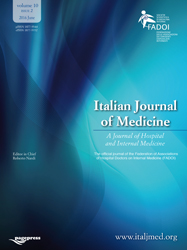Strong association between angiotensin I-converting enzyme insertion/deletion polymorphism and unexplained recurrent spontaneous abortion of Sudanese women: a case-control study
All claims expressed in this article are solely those of the authors and do not necessarily represent those of their affiliated organizations, or those of the publisher, the editors and the reviewers. Any product that may be evaluated in this article or claim that may be made by its manufacturer is not guaranteed or endorsed by the publisher.
Authors
This study investigated the link between angiotensin I-converting enzyme insertion/deletion (ACE I/D) polymorphism and unexplained spontaneous abortion. This retrospective analytical case-control was conducted at the Omdurman Maternity Hospital in Sudan. The current study contained 230 individuals, including 119 cases (women who had at least three abortions) of unknown cause and 119 controls (healthy women who had at least two full-term deliveries without spontaneous abortion). Patients and controls were provided five ml of ethylenediaminetetraacetic acid blood and answered questionnaires about their demographics, personal lives, and family histories. ACE I/D polymorphisms were assessed using a conventional polymerase chain reaction approach after total genomic DNA was isolated from blood leukocytes using the GF-1 blood DNA extraction kit. Data was analyzed using the Statistical Package for the Social Sciences version 24. ACE I/D polymorphism is strongly linked to unexplained spontaneous abortion, and women with the I/D and D/D genotypes are more likely to have it than those with the I/I genotype. The current study reveals that ACEI/D polymorphism increases pregnancy problems. Sudanese women may have spontaneous abortions due to the ACE I/D polymorphism.
How to Cite

This work is licensed under a Creative Commons Attribution-NonCommercial 4.0 International License.
PAGEPress has chosen to apply the Creative Commons Attribution NonCommercial 4.0 International License (CC BY-NC 4.0) to all manuscripts to be published.






